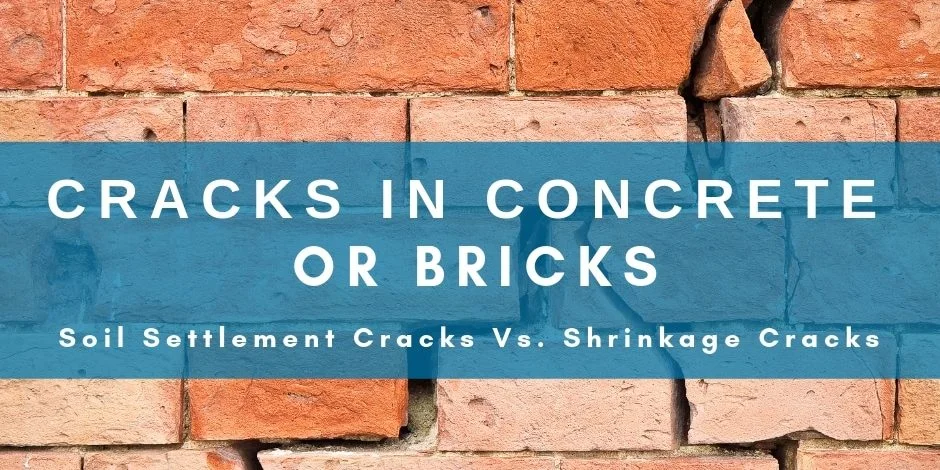
Cracks in Concrete or Bricks – Soil Settlement Cracks Versus Shrinkage Cracks
Cracks in concrete or masonry are common signs of damage to a home from soil settlement. However, not all cracks in concrete or masonry are the result of soil settlement. Another common cause of cracks are shrinkage cracks. What are shrinkage cracks? What should a homeowner look for as signs that a crack may be the result of soil settlement rather than a shrinkage crack?
Concrete and mortar (the material that binds masonry units together) undergo a chemical reaction to harden. As they undergo the chemical reaction, the materials can shrink as water is lost from the mix. That shrinkage causes the hardening material to crack. These types of cracks are known as shrinkage cracks. Shrinkage cracks are thin, hairline cracks on the face of the concrete or mortar. Shrinkage cracks are common, but can be minimized by proper mixing and placement of the concrete. While they are not pleasing to the eye, shrinkage cracks are generally not harmful to the structure of a home. The standards that govern concrete construction permit shrinkage cracks in concrete up to a certain crack width.
Cracks caused by soil settlement are typically different from shrinkage cracks in several ways:
- Cracks from soil settlement will often be much wider than a shrinkage crack.
- Cracks in a concrete slab-on-grade or other horizontal concrete slab caused by soil settlement will often have a vertical displacement across the crack, in other words, one side of the crack will be higher than the other side.
- Cracks in vertical surfaces caused by soil settlement will often be stair-step cracks. Stair-step cracks have that name because they resemble a set of stairs. Stair-step cracks travel horizontally, then travel vertically, then travel horizontally again.
- If a crack runs through a brick or other masonry unit, rather than just through the mortar holding the bricks or other masonry together, that is a sign of a settlement crack. Bricks and masonry units typically do not crack unless subjected to the stress of soil settlement.
Additionally, if a home has cracks in concrete or masonry accompanied by stair-step or diagonal cracks in the drywall on the interior or accompanied by doors and windows that stick or will not open, there is a greater chance that the cracking is caused by soil settlement.
Good builders and concrete contractors will construct homes with minimal shrinkage cracks. However, shrinkage cracks are usually not a reason to consult a construction lawyer. On the other hand, if your home has been damaged by or is showing signs of soil settlement, you should contact a lawyer as soon as possible. Soil settlement will damage the structure of your home, will reduce the useful life of your home, will require costly repairs and will prevent you from selling your home. Soil settlement is entirely avoidable. A quality builder will engage a geotechnical engineer to evaluate the soil at your home before beginning construction of the home’s foundation. If the soil was sufficient to support the home and any fill soil was properly placed and compacted, you would not have soil settlement issues.
Unfortunately, frequently builders construct homes on top of soil that is not suitable to support the home, do not properly place and compact fill soil brought to the lot, or construct homes next to slopes or improperly constructed retaining walls. When that happens, the damage to a home is the result of the builder’s negligence, and the builder is liable for the damage to your home.




















